令和6年05月15日 水曜日号
“ぷくぷく 平成17年”

水の中からあわがのぼってくる。
ぷくぷく ぽわん
又ひとつ ぷくぷ ぽわん。
ぷくぷく すいー。
ぷくぷく くるり
ぷくぷく ふわーり。
いつまでも いつまでも
ぷくぷく ぷくぷく。
(脇阪 克二)
Bubble (2005, by Katsuji Wakisaka)
Bubbles rise up in the water.
Rise and vanish, over and over.
Bubbles, bubbles slide.
Bubbles, bubbles roll.
Bubbles, bubbles float.
Forever and ever.
Bubbling, bubbling.
| English translation by Lala Fu |
Des bulles (2005 par Katsuji Wakisaka)
Des bulles sortent de l'eau
qui mousse, qui mousse…
En voilà d'autres qui remontent.
Des bulles qui glissent,
des bulles qui roulent,
des bulles toutes légères.
Qui bouillonnent, bouillonnent,
à l'infini.
| Traduction francaise par JB&B |
冒泡泡 (2005, 脇阪 克二)
氣泡咕嘟咕嘟從水中升起,
接著啵的消失。
又一個氣泡升起。
泡泡咕嘟 咻—
泡泡咕嘟 轉—
泡泡咕嘟 飄—
無止盡地冒泡泡。
| 中譯 : 莊 幃婷 |
→こちらのテキスタイルデザイン商品
(Textile products with this pattern)
令和6年05月11日 土曜日号
“涼風 平成21年”

夏の花といえば朝顔。
毎朝、目にも鮮やかな花を咲かせて、
暑い一日のスタートを勇気づけてくれる。
すだれも夏の風物詩。
その二つを組み合わせた模様で
涼しい風を感じてもらえばと思う。
(脇阪 克二)
Morning Breeze (2009, by Katsuji Wakisaka)
Morning glory, the flower of summer.
Every morning, the blooming flowers dazzle the eyes
and give the courage to start a hot day.
Reed screens are also a symbol of summer.
This motif is a combination of these two elements.
It would be great if you can feel a cool breeze from it.
| English translation by Lala Fu |
Brise fraîche (2009 par Katsuji Wakisaka)
Le volubilis est une plante d’été.
Chaque matin, de splendides fleurs s’épanouissent,
nous donnant le courage pour bien commencer notre journée.
Les stores en bambou aussi sont une tradition estivale.
Ce motif, une combinaison de ces deux choses,
vous fera ressentir, je l’espère, une petite brise rafraîchissante.
| Traduction francaise par JB&B |
涼風 (2009, 脇阪 克二)
提到夏天的花就會想到牽牛花。
每天早晨,看到鮮豔綻放的花朵,
為炎熱一天的開始增添了勇氣。
竹簾也是夏季代表的風物詩,
將兩者結合的圖案,
讓人感受到涼風徐徐。
| 中譯 : 莊 幃婷 |
令和6年05月08日 水曜日号
“太鼓橋 平成22年”
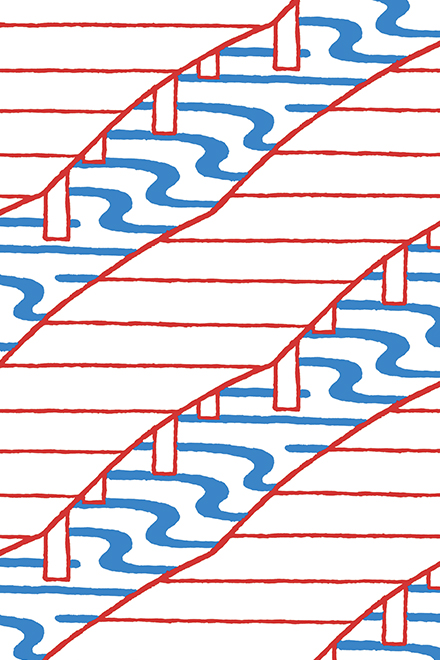
昔の橋は真中がふくらんでいた。
その方が上から重さがかかっても
木が耐えることが出来たのだろう。
少し高くなった橋の上からながめる
風景は少し違ったものが見えたかもしれない。
今でも神社に太鼓橋は残っている。
伊勢神宮などにも。
(脇阪 克二)
Arched Bridge (2010, by Katsuji Wakisaka)
In the past, bridges were arched in the middle.
Perhaps it can help the wood withstand the weight
even if it is applied from above.
Viewing from a slightly elevated bridge,
the landscape might have looked a little different.
Today, arched bridges still remain in shrines,
such as Ise Jingu and others.
| English translation by Lala Fu |
Pont arqué (2010 par Katsuji Wakisaka)
Les anciens ponts avaient un renflement en leur milieu.
De cette manière, le bois était capable de résister
même à un poids appliqué par le haut.
La vue du paysage depuis la partie bombée
peut sembler un peu différente.
Il existe encore des ponts arqués dans les sanctuaires,
au Ise-jingū, par exemple.
| Traduction francaise par JB&B |
太鼓橋 (2010, 脇阪 克二)
從前的橋樑會於正中央做成拱形,
這樣的設計讓木頭更能承受來自上方的重量吧。
在稍微有點高度的橋上往遠處眺望,
也許能看到不同的風景。
即使到現在,於伊勢神宮等神社,
仍然保留著太鼓橋。
| 中譯 : 莊 幃婷 |
令和6年05月04日 土曜日号
“のし 令和元年”
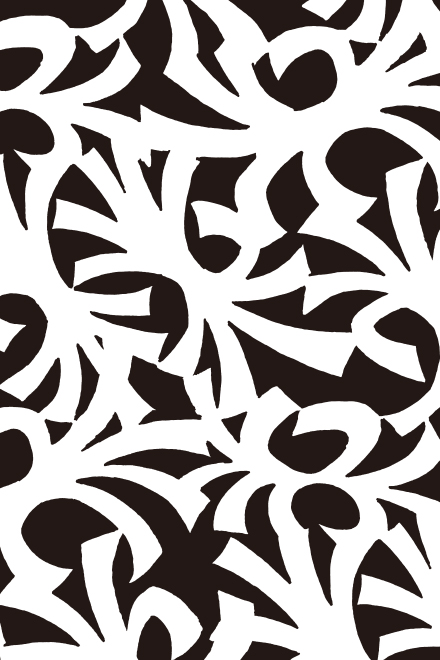
お祝い事や 贈答品に
添える 飾りが のしと呼ばれる
しかし もとは長寿を表わす
鮑の肉を薄くはいで
伸ばし、乾かした
のしあわびが使われていた
その のし という言葉だけが残って
現在も使われている
模様としてもおめでたいものとして
着物や大漁旗など
いろいろなものに使われていた
(脇阪 克二)
Noshi (2019, by Katsuji Wakisaka)
The ornament used in celebrations or on gifts is called "noshi".
However, it was a noshi abalone,
a piece of thinly sliced, elongated dried abalone which is a symbol of longevity.
Today, only the word "noshi" remains and is still in use.
As a motif, it was also used as a celebration
on many things such as kimono and fisherman's flags.
| English translation by Lala Fu |
Noshi (2019 par Katsuji Wakisaka)
Les décorations qui accompagnent célébrations et
échanges de cadeaux sont appelés noshi.
Cependant, à l’origine, ce mot représentait la longévité.
L'appelation Noshiawabi était utilisée pour
nommer les fines lamelles d'ormeau séché.
Il ne reste plus que le mot ""noshi""
toujours usité de nos jours.
Il est utilisé en tant que motif sur divers objets
comme les kimonos ou bien les drapeau de pêcheurs
car il est synonyme de bons présages.
| Traduction francaise par JB&B |
禮簽 (2019, 脇阪 克二)
慶祝或送禮時使用的裝飾
稱為禮簽(熨斗,Noshi)
本來是把象徵長壽的鮑魚切成薄片
拉長後曬乾成為「熨斗鮑」
今日只有「熨斗」這個詞彙留存下來並繼續使用
作為圖案也被當作慶祝用途
用於和服或大漁旗等不同的物品之中
| 中譯 : 莊 幃婷 |
→こちらのテキスタイルデザイン商品
(Textile products with this pattern)
令和6年05月01日 水曜日号
“かたかた 平成26年”

右と左のたび下の模様が
違うのでかたかた。
ふつうは左右の模様が
違うとおかしいが
これは違っていることがかわいい。
(脇阪 克二)
Unbalance (2014, by Katsuji Wakisaka)
The patterns on the left and right tabi socks are different,
so it is unbalanced.
In normal cases, it will be weird
if the patterns on the left and right sides are different,
but this one is cute because of the unsymmetry.
| English translation by Lala Fu |
Cliquetis (2014 par Katsuji Wakisaka)
Ce motif est différent à droite et à gauche.
Habituellement, un motif qui n'est pas semblable
des deux côtés est étrange,
mais celui-ci est différent, ce qui le rend mignon.
| Traduction francaise par JB&B |
不平衡 (2014, 脇阪 克二)
由於足袋襪的左右腳圖案不一樣,
有種不平衡感。
一般來說,如果左右圖案不一樣會很奇怪。
但這個圖案就是因為不相同所以可愛。
| 中譯 : 莊 幃婷 |
令和6年04月26日 金曜日号
“にほひ 令和5年”
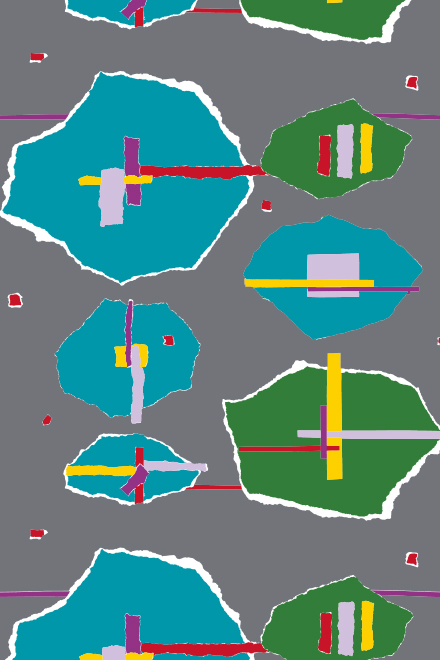

にほひ(におい)という
言葉のひびきで浮かんでくるのは
万葉集や百人一首の世界
でもこの花はどこか宇宙的に感じる
思いのままに 創作した「にほひ」は
見る人のイメージで香るのだろうか
(脇阪 克二)
Scent (2023, by Katsuji Wakisaka)
The sound of the word "Nihohi" (pronounced as "Nioi" which means scent)
evokes the world of "Manyoshu" or "Hyakunin Isshu",
but this flower feels somehow cosmic.
I wonder if the "Nihohi" created as I wished
is scented in the viewer's imagination?
| English translation by Lala Fu |
Senteurs (2023, par Katsuji Wakisaka)
Le son du mot nihoi (prononcé "nioi", et qui veut dire "odeurs")
m'évoque le monde poétique des
recueils "Manyoshu" et "Hyakunin Isshu".
Mais cette fleur a quelque part un côté cosmique.
Je me demande si ce "Nihohi" que j'ai créé comme je l'ai souhaité
est également parfumée dans l'imagination du public.
| Traduction française par JB&B |
香氣 (2023, 脇阪 克二)
Nihohi(香氣)這個字的讀音
讓人想起萬葉集或百人一首的世界
但這朵花有種浩瀚的宇宙感
而我隨心創作的「Nihohi」
不知是否會在觀者的想像中散發出美好香氣
| 中譯 : 莊 幃婷 |
→こちらのテキスタイルデザイン商品
(Textile products with this pattern)
令和6年04月13日 土曜日号
“SO-SU-Uと太乱格子 令和5年”
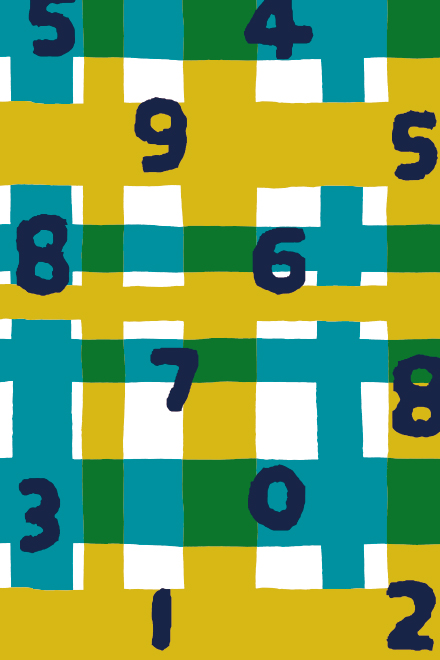
文字通り太く、不規則に
編まれた格子の上に
SO-SU-Uを重ねた模様
気楽で楽しい感じなので
誰でも受け入れやすい
こんな何でもない柄が
テキスタイルデザインの基本
かもしれない
(脇阪 克二)
SO-SU-U and Random Lattice (2023, by Katsuji Wakisaka)
As its name suggests, it is a pattern of randomly interwined broad checks
overlapped with SO-SU-U.
Such an easy-going and fun pattern can be accepted by anyone easily.
Perhaps this kind of non-descriptive pattern is the basis of textile design.
| English translation by Lala Fu |
SO-SU-U et le treillis désordonné (2023 par Katsuji Wakisaka)
Le motif SO-SU-U superposé
à un treillis tissé épais et irrégulier.
C'est très simple et amusant.
Il est facilement adaptable à tout le monde.
Un motif aussi ordinaire est
sans doute la base de la création textile
| Traduction francaise par JB&B |
SO-SU-U十數和隨性格子 (2023, 脇阪 克二)
如同其名
在粗線條和不規則編織的格子上
疊加SO-SU-U十數的紋樣
給人輕鬆有趣的感覺
任何人都很容易接受
這樣簡單普通的圖案
或許正是圖案紋樣的本質
| 中譯 : 莊 幃婷 |
→こちらのテキスタイルデザイン商品
(Textile products with this pattern)
令和6年04月06日 土曜日号
“小袖 平成19年”
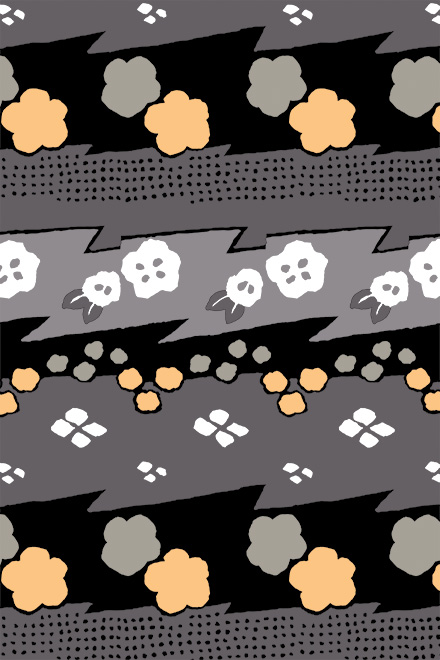
織、染、刺繍の贅をつくして作られた小袖は、
着物の全盛期を彩る華やかさにあふれている。
そんな小袖を僕なりにイメージしたものにしてみた。
(脇阪 克二)
Kosode Kimono (2007, by Katsuji Wakisaka)
Encompassing all the luxury of weaving, dyeing and embroidery,
Kosode (small kimono sleeve) is full of the glamour of kimono's heyday.
I tried to create my own image of such a Kosode.
| English translation by Lala Fu |
Kosode (2007 par Katsuji Wakisaka)
Le Kosode (kimono à manches courtes) est le résultat
de la magnificence du tissage, de la teinture et de la broderie.
Il est la splendeur, l'apogée du kimono.
J'ai essayé de créer ma propre image du kosode.
| Traduction francaise par JB&B |
小袖 (2007, 脇阪 克二)
採用華美精緻的編織、染色和刺繡工藝製成的小袖,
將和服全盛時期的華麗絢爛表現得淋漓盡致。
我試著創作屬於自己的小袖印象。
| 中譯 : 莊 幃婷 |
令和6年04月03日 水曜日号
“若葉 平成21年”
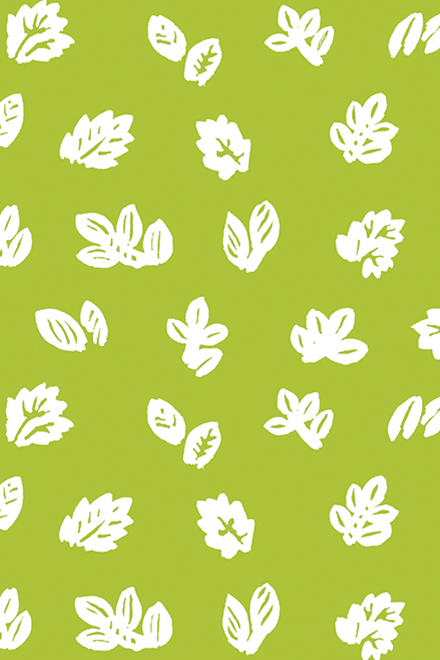
雨が上がった後の瑞々しい新緑。
若々しい力が体のすみずみまで充ちてくる様だ。
(脇阪 克二)
Fresh Leaves (2009, by Katsuji Wakisaka)
Fresh and lively greenery after the rain.
It is as if youthful strength is filling every nook and corner of your body.
| English translation by Lala Fu |
Jeune feuillage (2009 par Katsuji Wakisaka)
Un jeune et éclatant feuillage après la pluie
Une vigueur juvénile semble envahir chaque partie vivante.
| Traduction francaise par JB&B |
若葉 (2009, 脇阪 克二)
雨後的新綠
彷彿讓身體的每個角落都充滿了青春活力
| 中譯 : 莊 幃婷 |
令和6年03月30日 土曜日号
“鎧 平成11年”
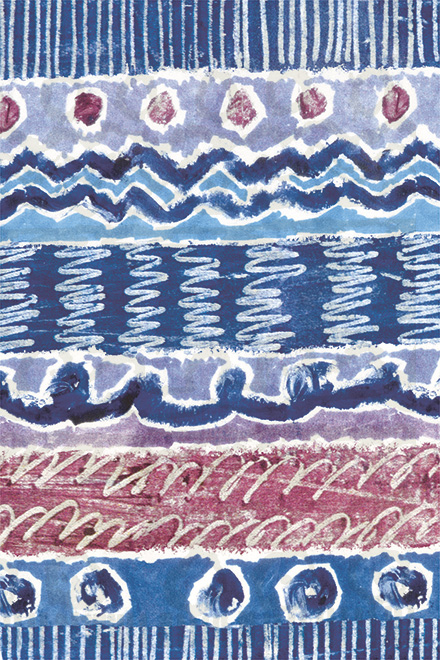
鎧はいくさの時、矢や剣などから
身を守るために身につけた。
しかし防御だけではなく
赤の鎧で統一した武田の赤備えなどは
その色を見るだけで敵からおそれられた。
と同時に、装飾的に見ても
素晴しいものだと思う。
日本人は実用品を洗練させていって
美しいものに高めていく能力に
すぐれた民族だと思う。
(脇阪 克二)
Armor (1999, by Katsuji Wakisaka)
Armor was put on to protect the body
against arrows and swords during wars,
but it is more than a defense.
Unified in red armors, Takeda's Akazonae (Red Arms)
frightened enemies just by the mere sight of this color,
while it is also terrific from a decorative perspective.
I think Japanese people are good at elevating functional necessities
into sophiscated and beautiful objects.
| English translation by Lala Fu |
Armure (1999 par Katsuji Wakisaka)
Les armures étaient portées pour se protéger
des flèches et des coups d'épée pendant la guerre.
Mais l'armure ne servait pas uniquement à cela.
L'armure des Takeda, par exemple,
suffisait à effrayer l'ennemi rien que par sa couleur rouge.
En même temps, elle pouvait aussi être considérée
comme un objet de décoration.
Je pense que les Japonais sont un peuple
qui a une capacité exceptionnelle à raffiner
les objets pratiques et à les rendre beaux.
| Traduction francaise par JB&B |
盔甲 (1999, 脇阪 克二)
戰爭時,武士會穿上盔甲以抵禦箭矢和刀劍等攻擊。
然而,甲冑不只具備防衛功能,
像是武田的赤備軍團,全員統一的紅色鎧甲,
讓敵人僅僅是看到這個顏色就感到畏懼。
此外,從裝飾角度來看也十分優秀。
我認為日本人是非常善於將實際使用的物品加以雕琢,
使其變得更精緻美好的民族。
| 中譯 : 莊 幃婷 |
令和6年03月26日 火曜日号
“笑み 平成27年”
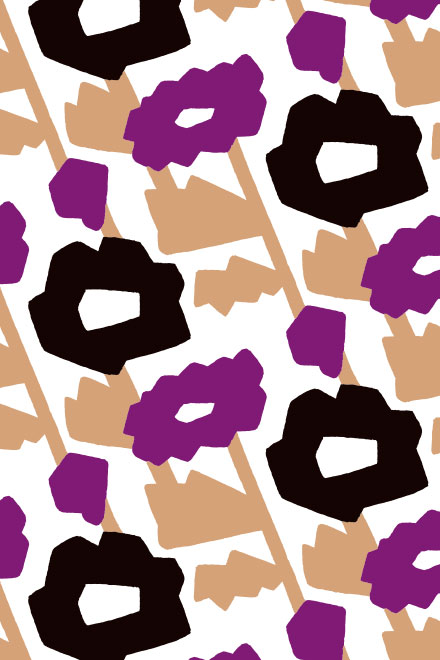

ちょっと不器用な感じがする
大きな花
ななめになって 上へ上へと
伸びている
ちょっと ほほえましい大きな花柄
(脇阪 克二)
Grin (2015, by Katsuji Wakisaka)
This big flower has a little feeling of crumsiness.
It is placed in an oblique manner,
climbing up and up.
A grinning, large floral pattern.
| English translation by Lala Fu |
Rires (2015, par Katsuji Wakisaka)
De grandes fleurs
s'allongent, s’étirent et
montent, un peu maladroitement.
Et voilà un grand motif floral qui fait sourire.
| Traduction française par JB&B |
笑容 (2015, 脇阪 克二)
這朵大花
感覺有點笨拙
斜斜的
不斷地往上伸展
這是個會令人暖心微笑的大花圖案
| 中譯 : 莊 幃婷 |
→こちらのテキスタイルデザイン商品
(Textile products with this pattern)
令和6年03月13日 水曜日号
“花のお江戸 平成25年”
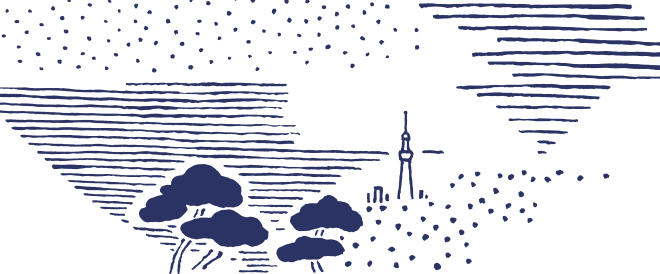
人と車があふれ地下鉄や鉄道が
縦横無尽に走る東京
高層ビルが建ち並び
スカイツリーも出来て日々変化し
発展し続ける日本の首都
そんな東京で暮している中で
ふとした時に富士山が見える
オリンピックも決って
花のお江戸は
世界の東京として華かに
変身していくことだろう
(脇阪 克二)
Prosperous Edo (2013, by Katsuji Wakisaka)
Tokyo is overflowing with people and cars,
with subways and railways running in all directions.
With skyscapers packed together and Tokyo Skytree is being built,
the capital of Japan has continued to evolve and develop.
While living in such a place like Tokyo,
Mount Fuji can be seen when you least expect it.
Being chosen to host the Olympic Games,
the prosperous Edo will probably continue to transform gorgeously
into the "World's Tokyo".
| English translation by Lala Fu |
Edo fleuri (2013 par Katsuji Wakisaka)
Tokyo est une ville inondée de personnes et de voitures,
avec des métros et des chemins de fer qui circulent
dans toutes les directions.
Les gratte-ciel bordent les rues.
La tour "Skytree" est en cours de construction
et la ville se transforme jour après jour.
La capitale du Japon continue de se développer.
En vivant dans un tel Tokyo,
on peut apercevoir par moment le mont Fuji.
Les Jeux olympiques vont y être organisés.
La ville fleurie d'Edo va être transformée en la "Tokyo du monde".
| Traduction francaise par JB&B |
花都江戶 (2013, 脇阪 克二)
東京是一座車水馬龍
鐵路四通八達的城市
摩天大樓櫛比鱗次
晴空塔也順利建成
日本首都日新月異且持續進化
生活於此
不經意還能看到富士山
決定舉辦奧運會後 繁花似錦的江戶
將搖身一變成為世界的東京
| 中譯 : 莊 幃婷 |
→こちらのテキスタイルデザイン商品
(Textile products with this pattern)
令和6年03月09日 土曜日号
“花あられ 平成26年”
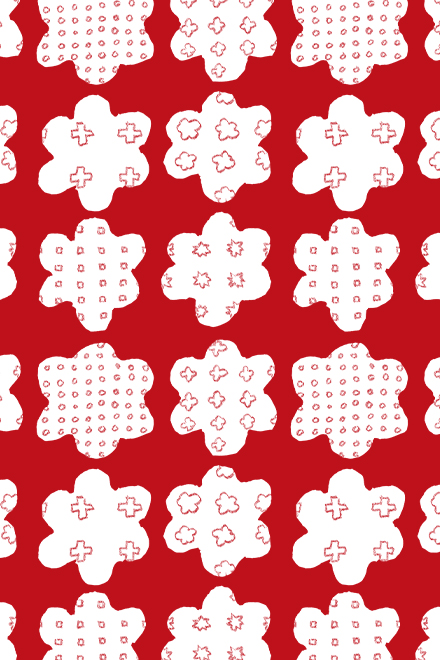
花の中に小さな あられが
ばらまかれている
花とあられが ひとつになった
親しみやすく 愛らしい模様
(脇阪 克二)
Flower Hail (2014, by Katsuji Wakisaka)
Tiny hail is scattered among the flowers.
Flower and hail become one.
An approachable and endearing pattern.
| English translation by Lala Fu |
Grêle de fleurs (2014 par Katsuji Wakisaka)
Des petits grains sont éparpillés
parmi les fleurs,
ne faisant plus qu'un.
Un motif sympathique et charmant.
| Traduction francaise par JB&B |
花霰 (2014, 脇阪 克二)
花朵中 小小的冰霰
散落各處
花朵和小冰霰 合而為一
成為令人熟悉又可愛的模樣
| 中譯 : 莊 幃婷 |
→こちらのテキスタイルデザイン商品
(Textile products with this pattern)
令和6年03月06日 水曜日号
“桜に朽木雲 平成29年”
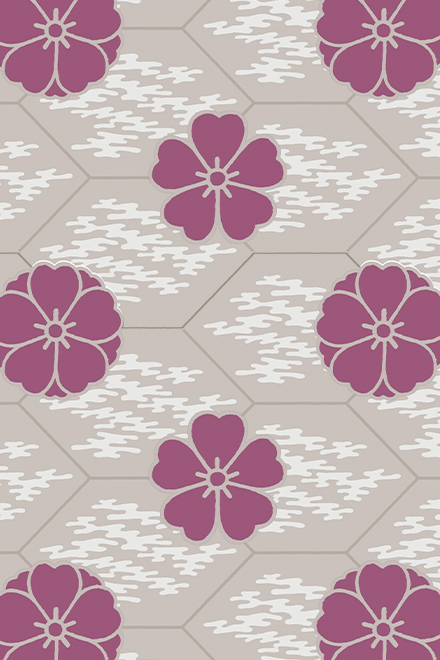
たなびく雲を背景に
花開く桜
大輪の花を咲かせた
一重と八重の桜
昔からある文様を組み合せた一点
(脇阪 克二)
Cherry Blossom on Rotting Bark like Cloud (2017, by Katsuji Wakisaka)
Cherry blossom blooms against a background of cloud banks.
Big single and double cherry blossoms are in bloom.
A combination of traditional patterns.
| English translation by Lala Fu |
Cerisiers et nuages en décomposition (2017 par Katsuji Wakisaka)
Sur un arrière-plan de nuages flottants,
les cerisiers en pleine floraison
donnent de grandes fleurs.
À unique ou à multiples couches de pétales,
une combinaison de motifs traditionnels.
| Traduction francaise par JB&B |
櫻花與朽木雲 (2017, 脇阪 克二)
以空中飄動的雲朵為背景
大朵櫻花綻放於其中
有一重櫻和八重櫻
這是將自古以來就有的紋樣結合之作品
| 中譯 : 莊 幃婷 |
→こちらのテキスタイルデザイン商品
(Textile products with this pattern)
令和6年03月02日 土曜日号
“たまたま 令和元年”
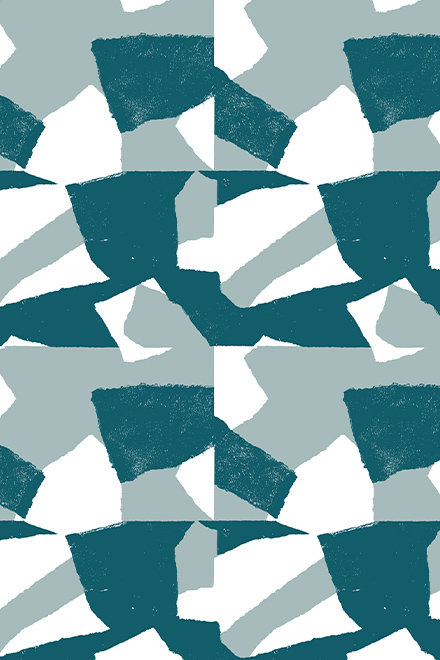
たまたま
この柄は2つの色が
重なり合って出来ている
どんな風に見えるか想像できず
たまたま こうなったという要素が大きい
人生においても
たまたま そうなったということは
よくあるし それはそれでいいのだろう
(脇阪 克二)
Accidentally (2019, by Katsuji Wakisaka)
Accidentally.
This pattern was created by overlapping two colors
without being able to imagine how it might look like.
The element of "by coincidence" is key.
Even in life,
there are many things that happened by chance
and that's probably a good thing.
| English translation by Lala Fu |
Par hasard (2019 par Katsuji Wakisaka)
Le hasard.
Ce motif est composé de deux couleurs
qui se superposent.
Je ne pouvais pas imaginer à quoi il ressemblerait.
Le hasard est quelque chose d'important.
Même dans la vie,
certaines choses arrivent accidentellement
et c'est probablement une bonne chose.
| Traduction francaise par JB&B |
偶然 (2019, 脇阪 克二)
一個偶然情況下
把這個圖案用了兩種顏色
重疊在一起
無法想像會變成什麼模樣
說是碰巧完成的可能比較接近
就像人生
很多時候 只是剛好變成如此
就這樣欣然接受也不錯吧
| 中譯 : 莊 幃婷 |
→こちらのテキスタイルデザイン商品
(Textile products with this pattern)
令和6年02月27日 火曜日号
“わらわ 令和5年”


わらわとは童の古い言い方
童が野で遊び
花を一輪つみ
そして 又 一輪つんで
手に にぎりしめて
おうちに帰る
(脇阪 克二)
Warawa (2023, by Katsuji Wakisaka)
Warawa is an old word meaning "child".
Warawa plays in the field,
picks up a flower,
and then picks up another flower,
holds them firmly,
and brings them home.
| English translation by Lala Fu |
Warawa (2023, par Katsuji Wakisaka)
Warawa est un mot ancien désignant un enfant.
Un enfant joue dans les champs
et cueille une fleur
après l'autre.
Il les enferme aux creux de ses mains
et rentre chez lui.
| Traduction française par JB&B |
孩童 (2023, 脇阪 克二)
日文的わらわ(Warawa)是孩童的古老說法
孩童在田野間玩耍
摘下了一朵花
接著 又摘了一朵
緊抓手裡
帶著回家
| 中譯 : 莊 幃婷 |
→こちらのテキスタイルデザイン商品
(Textile products with this pattern)
令和6年01月26日 金曜日号
“から草あそび 令和2年”


四角や丸の幾何的な花を
針金のような 茎でつないだ模様
唐草模様を超現代的にしたような
不思議な柄
(脇阪 克二)
Scroll Play (2020, by Katsuji Wakisaka)
A pattern of square or round geometric flowers,
connected by wire-like stems.
This mysterious pattern looks like
an ultramodern interpretation of scroll motifs.
| English translation by Lala Fu |
Tressage d’herbes (2020, par Katsuji Wakisaka)
Fleurs géométriques en carrés et en cercles,
reliées par des tiges en guise de fil.
Motif mystérieux,
comme une version ultramoderne de l'arabesque.
| Traduction française par JB&B |
唐草遊戲 (2020, 脇阪 克二)
方形和圓形的幾何花朵
被如鐵線般的花莖連結起來的模樣
這個不可思議的圖案
是唐草圖案的超現代版本
| 中譯 : 莊 幃婷 |
→こちらのテキスタイルデザイン商品
(Textile products with this pattern)
令和6年01月03日 水曜日号
“お祝い 平成21年”

松と竹は冬の間にも青々とした緑を保ち、
梅は厳しい寒さの中に花を開く。
このことから松竹梅は吉祥の象徴として、
お祝い事には欠かせないものとなっている。
お祝いの手ぬぐいを松竹梅の吉祥模様で作った。
(脇阪 克二)
Celebration (2009, by Katsuji Wakisaka)
Pine and bamboo remain lush green even in winter,
while plum blossoms in the harsh cold.
For this reason, pine, bamboo and plum have become auspicious symbols
which are an integral part of celebrations.
I created a celebration handkerchief
in the motifs of pine, bamboo and plum.
| English translation by Lala Fu |
Célébration (2009 par Katsuji Wakisaka)
Les pins et les bambous restent verts pendant les mois d'hiver,
les fleurs de prunier s'épanouissent dans le froid glacial.
C'est pourquoi ce sont des symboles de bonne fortune,
ils sont indispensables aux célébrations.
J'ai confectionné de jolies serviettes de fête colorées
avec ces motifs de bonne augure.
| Traduction francaise par JB&B |
祝賀 (2009, 脇阪 克二)
寒冬中,松竹依然蒼翠,
梅花於嚴寒中綻放,
讓松竹梅成為吉祥的象徵,
也成為各種慶祝場合時不可或缺的代表。
我以吉祥圖案松竹梅創作了祝賀手巾。
| 中譯 : 莊 幃婷 |
令和5年12月30日 土曜日号
“家紋と一文字 平成18年”

日本を象徴する花、桜と菊をモチーフにして
SOU・SOUの家紋を作りました。
普通はひとつのモチーフで作られているのですが、
あえて2つを組み合わせてみました。
(脇阪 克二)
The SOU・SOU Crest (2006, by Katsuji Wakisaka)
SOU・SOU crest is created
by using the motifs of cherry blossom and chrysanthemum,
the symbolic flowers of Japan.
Although crests usually consist of one motif,
I deliberately used a combination of two.
| English translation by Lala Fu |
Armoiries & Idéogramme (2006 par Katsuji Wakisaka)
En utilisant le cerisier et le chrysanthème,
les deux fleurs symboliques du Japon,
j'ai créé les armoiries de SOU-SOU.
Normalement, ils sont réalisés avec un seul motif,
mais j'ai essayé de combiner les deux.
| Traduction francaise par JB&B |
家紋與一文字 (2006, 脇阪 克二)
以象徵日本的花,櫻花和菊花為主題,
創作了SOU・SOU的家紋。
一般來說只會使用一種圖案,
但我刻意將兩個圖案結合起來。
| 中譯 : 莊 幃婷 |
→こちらのテキスタイルデザイン商品
(Textile products with this pattern)
令和5年12月26日 火曜日号
“おとぎばなし 令和5年”
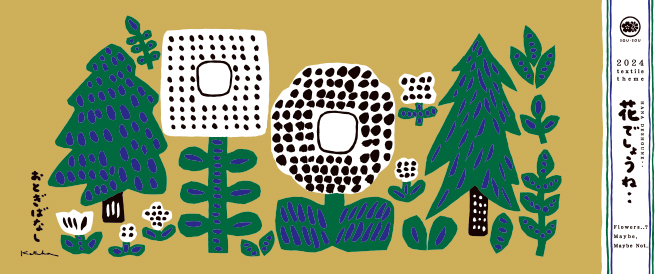

森の中へ入っていく
木が立ち並んでいる
いろんな花が咲いている
静かな森では
歩いている足音だけが聞こえる
ガサゴソ ガサゴソ ガサゴソ
だんだん おとぎばなしの
世界へ入っていってしまう
(脇阪 克二)
Nursery Tales (2023, by Katsuji Wakisaka)
Stepping into the forest,
where trees are lining up,
different flowers are blooming.
Only the sound of footsteps can be heard
in the quiet forest.
Rustling, rustling, rustling,
and unconsciously slip into the world of nursery tales.
| English translation by Lala Fu |
Conte de fées (2023, par Katsuji Wakisaka)
J’entre dans la forêt.
Les arbres sont tous alignés.
Diverses fleurs s'épanouissent.
Dans la forêt silencieuse,
je n'entends que le bruit de mes pas.
Peu à peu, dans le bruissement
des feuilles, j'entre dans un monde féérique.
| Traduction française par JB&B |
童話 (2023, 脇阪 克二)
走進森林
眼前樹木林立
各種花朵盛開
在寂靜的森林裡
只聽得到腳步聲
沙沙 沙沙 沙沙
漸漸地 一不小心就走入了童話的世界
| 中譯 : 莊 幃婷 |
→こちらのテキスタイルデザイン商品
(Textile products with this pattern)






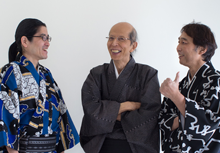

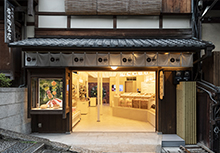

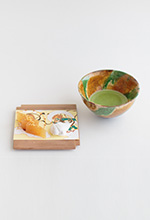
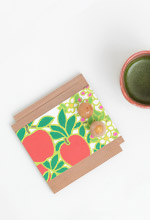
 お問い合わせ窓口
お問い合わせ窓口
What inspired Katsuji Wakisaka to use pine, bamboo, and plum motifs in the Celebration handkerchief, and what do they symbolize?
visit us Telkom University